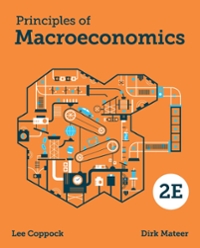Question
As consumers demand greater food variety, retailers are under increasing pressure to provide their customers with a greater choice of fresh produce, including fruits, vegetables,
As consumers demand greater food variety, retailers are under increasing pressure to provide their customers with a greater choice of fresh produce, including fruits, vegetables, fish, and fresh flowers. Whether it's fair trade coffee from Bali, fresh cut roses from Kenya, or Spanish cherries in winter, people expect to readily find the products they want, when they want them, and at a price they can afford.
This puts extreme pressure on supply chains as they become even more overstretched and far flung in trying to provide exotic goods. Managing this complexity is a job for experts. As information technology makes using real-time data more feasible in the decision-making process, and as forecasting and modeling become more accurate, one would expect the job of a supply chain manager to get easier. But this is far from the case, and the cost of not getting things right can be catastrophic.
It has been estimated that the losses from unsold fruits and vegetables are as high as $15 billion per year. The National Resources Defense Council (NRDC) argues that almost half of the U.S. supply of all fruits and vegetables goes to waste and is unconsumed. This is hugely inefficient and a source of much concern, especially for companies that are trying to be "lean and green." Even more troubling for the food industry, it appears that increasing government regulations are on the way. The European Union recently passed a resolution calling for food waste to be cut in half by the year 2020. Over 50 food retailers in Great Britain have already instituted their own resolutions for reducing food waste in their operations and supply chains. Where Europe goes, will the rest of the world follow?
Supply chains, for the most part, utilize one of two modes of operation. They can be considered to be operating as apushsystem or as apullsystem. In a push system, a supplier (or producer) sends a fixed batch of fresh produce items to some wholesaler or intermediate market. A distributor then buys the items that it needs, or expects to sell, and makes them available to the general public, leaving what it does not need for other buyers. In a pull system, however, almost all of the action starts downstream with the distributor, who places an order for a particular list and quantity of fresh items. The producer then ships only the ordered items. Due to the nature of the goods, a certain amount of rot, damage, or decay is usually expected to occur. That means that when the distributor receives its shipment at the final destination, the quantity of goods available for sale could be less than was originally expected (since the supplier does not really have an incentive to overfill the order).
So, of the two available systems (push vs. pull), which one delivers "fresher" results in an operating environment that involves fragile, delicate, or perishable goods? Recent research has shown that in these types of perishable supply chains, better performance is usually achieved by using a pull type of operation. But it's a pull system with a twistthere is a special compensation mechanism for the producer.
Because of the fragile nature of the products being shipped, the producer usually carries a greater amount of risk than the distributer does. The producer usually has to ship more product than was originally ordered or paid for to ensure that a sufficient quantity arrives at the final destination. This excess can bring about inefficiencies and misaligned incentives, resulting in lower overall performance (and profits) for the supply chain as a whole.
One way to overcome this problem is by developing a negotiated compensation mechanism for the supplier. When an order is placed, the amount shipped is increased by a predetermined multiplier. For any additional material that arrives (i.e., if there was less waste, damage or spoilage in transit than expected), the supplier receives compensation for it at a discounted wholesale price, which has been pre-negotiated.
To get the best performance and highest profitability out of a supply chain dealing in perishable goods, a great deal of trust and respect is required by the respective partners. By determining a fair and equitable price for the compensation mechanism, the distributor can reduce the amount of risk for the producers and compensate them for additional inventory that would normally have gone to waste. And that means less food going to the dumpster!
Question one:What are some of the challenges to delivering perishable goods to customers? Justify your answers. (5 marks)
Question two:What is the difference between the push and pull systems? Is one better than the other for this type of product? Justify your answers. (5 marks)
Step by Step Solution
There are 3 Steps involved in it
Step: 1

Get Instant Access to Expert-Tailored Solutions
See step-by-step solutions with expert insights and AI powered tools for academic success
Step: 2

Step: 3

Ace Your Homework with AI
Get the answers you need in no time with our AI-driven, step-by-step assistance
Get Started


